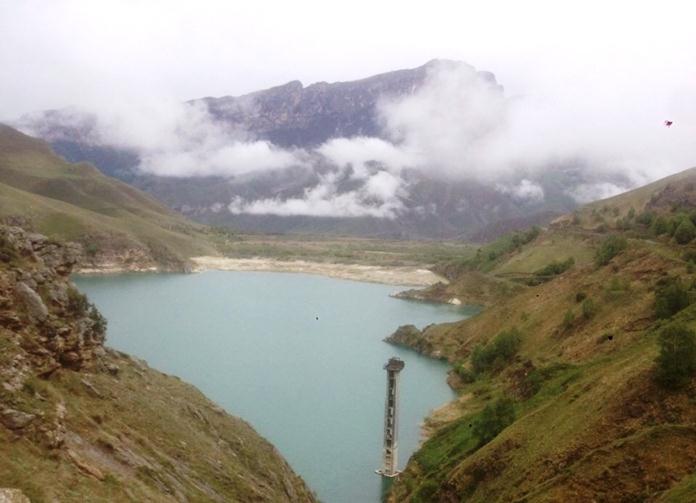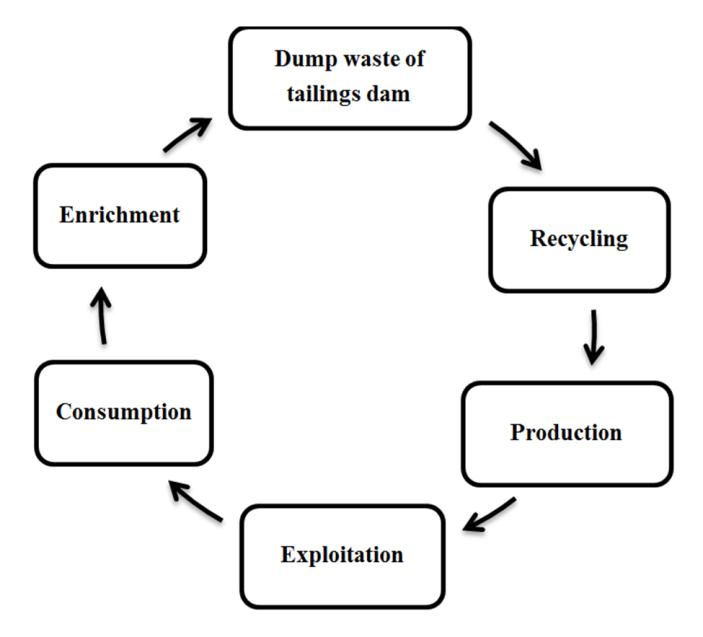SUSTAINABLE ENVIRONMENTAL AND ECONOMIC DEVELOPMENT OF THE KABARDINO-BALKARIAN REPUBLIC
SUSTAINABLE ENVIRONMENTAL AND ECONOMIC DEVELOPMENT OF THE KABARDINO-BALKARIAN REPUBLIC
Abstract
Currently, the tailings dump of the liquidated joint-stock company Tyrnyauz Mining and Processing Plant is of considerable interest for the development of the economy of the Kabardino-Balkaria and in order to improve the environmental condition of the region. However, the lack of a developed methodological approach to the formation of an organizational and economic mechanism for circular subsoil use is one of the reasons hindering the development of a tailings dump. The article is devoted to the analysis of the circular economy, which will ensure the efficiency and effectiveness of subsoil waste management and secondary mineral resources, and will also help improve the ecosystem of the tourism cluster of the Elbrus region of the Kabardino-Balkarian Republic.
1. Introduction
At the beginning of the twentieth century, humanity extracted 20 elements of the periodic table from nature, and now - 92 elements; About 100 thousand chemical compounds are created from the extracted elements, most of which go to waste in billions of tons and are harmful to the environment; they cannot be destroyed by burning, burying or dumping into the ocean. Of the 100 billion tons of ore, rock substances, and building materials extracted from the Earth, 98-99% goes to waste. For example, the prosperous 20% of countries use 85% of the world's wood, 75% of waste metals and 70% of energy. In Japan, recycling of industrial waste already exceeded 58.5% in the 80s. The question arises: who is preventing us from resorting to world experience in resolving this issue. I think it is completely insufficient to reduce the problem to purely material factors; it is necessary to focus on reducing the negative environmental consequences of economic development. The low level of knowledge about the problem of tailings management is very alarming; of course, I would like to have broader approaches, both from the authorities and scientists.
2. Research methods and principles
The presented work analyzes the environmental and economic aspects of the development of the tailings dump area of the Tyrnyauz tungsten-molybdenum plant. This is the only capital class I structure in Kabardino-Balkaria, which is the highest (~ 168 m) industrial waste storage facility in our country. The tailings dump was created in the bed of the Gizhgit River by the method of one-sided alluvium of tailings into a retaining earth dam. At the same time, the water flow of the river. After blocking its channel, Gizhgit is diverted through a special tunnel (with a cross-section of ~ 5 m2 and a length of ~ 3.5 km) bypassing the tailings dump into the river bed Baksan. The former river bed Gizhgit, which has steep slopes, is occupied by a number of terraces, at different times filled with waste from the plant's processing plant (fine sludge pumped in the form of pulp). During the operation of the tailings dump (since 1957), it has accumulated more than 80 million m3 of ore industry waste containing many types of heavy metals and toxic compounds, while the total volume of the tailings dump with a water component reaches ~ 120 million m3.

Figure 1 - Tailings ponds of the Tyrnyauz tungsten-molybdenum plant
The threat of an accident at this facility can arise for many reasons, including loss of stability of the downstream slope, overflow of the tailings dump and erosion of the surface discharge channel, destruction (collapse) of the bypass tunnel, earthquakes, etc. The situation has worsened sharply in recent decades due to the increased development of mudflow processes in the upstream drainage basin of the river. Gizhgit, as a result of which significant volumes of soil-clastic material, stones, fallen trees, etc. are carried into the river bed. These mudflows are periodically “drawn” by the flow of water into the tunnel and pose a threat of blockage with subsequent forced discharge of the river’s water flow. Gizhgit into the upper tail of the tailings pond. Overflow of the latter is fraught with a direct threat of its destruction, the reality of which was demonstrated by mudflows along the river in 2002 , , .
The relevance of this issue is determined by the fact that a relatively new phenomenon for the natural environment is being studied, a phenomenon that changes over time, namely, the impact of storing technogenic chemicals in a mountain ecosystem with a small safety margin, and in forms significantly different from natural ones. The period of post-technogenic impact is already significant, and a unique association of pollutants characterized by exceptional biological activity, including genotoxicity, has been identified , .
Research methodology
To improve the environmental situation in the area adjacent to the tailings pond, while simultaneously economic development can be achieved only through a systematic approach. For the republic as a whole, one of the main factors of its economic development is, first of all, the intensification of production. Improving and maximizing the reuse of tailings waste through circular systems and innovative technologies; collaboration with the manufacturing sector to develop competitive, high-quality products; good marking of materials and alloys to facilitate identification at the end of their service life , . The circular economy we propose is restorative and closed in nature , , . It is distinguished by a reduction in the volume of consumption and processing of primary raw materials, which is achieved through the use of secondary resources, which, in turn, leads to resource conservation, a reduction in the amount of waste, and as a result, the areas intended for their disposal , .

Figure 2 - Circular economy model
Implications for society and the environment
By implementing the principles of a circular economy, it is possible to reduce greenhouse gas emissions on a global scale. Circle Economy estimates that 62% of global greenhouse gas emissions (excluding emissions from land use and forestry) are associated with the extraction, processing and production of goods to meet society's needs; only 38% is discarded during the supply and use of products and services , . An important principle of the circular economy is the decoupling of economic growth from the consumption of raw materials. As a result, the economy is not hampered by shortages of raw materials to grow. The transition to a circular economy is expected to contribute to economic growth. According to a 2017 UNEP report, the global economy will benefit by $2 trillion per year from more efficient use of resources by 2050 , , , .
3. Conclusion
With all the gravity of the choice between environmental and economic interests, common sense should prevail, namely: what is economical is what does not destroy the human environment and his health. That is, production and economic activities should be carried out, if not on a priority basis, then at least on a parity basis between ecology and economics. And this despite the fact that the economy is the initial basis for solving environmental problems created and being created by it. A circular business model (circular economy) will allow:
1. Reduce the environmental risks of subsoil use, helping to reduce the negative impact on all components of the environment.
2. Preserves natural reserves of minerals and the use of secondary mineral raw materials.
3. Will ensure the economic efficiency of circular subsoil use. It will be beneficial for enterprises to develop circular subsoil use if the results obtained not only cover, but also exceed, all costs incurred.
It is necessary to conduct a comprehensive scientific and technical examination of the entire facility, as well as monitor its condition and development dynamics, including field surveys of the earth dam, bypass tunnel and the entire mudflow basin of the river Gizhgit, including the subsequent development of protective anti-mudflow measures to prevent and prevent the formation of mudflows here. It is this combination of economic mechanism and scientific and practical environmental management that will be appropriate and will reduce environmental risks.
